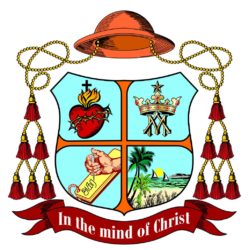Early Life
The Martyr was born in the year 1712 at Nattalam in the present district of Kanyakumari, Tamil Nadu, India. He was named Neelakandan. “Pillai” was a popular appellation referring to his high caste and social position. A good person by nature and well educated, he started his career as a soldier. He, then worked as a palace official in the king’s treasury.
Conversion and Baptism:
While performing his duties as a palace official, Neelakandan came in contact with a Catholic officer, Eustachius Benedictus De Lannoy, a Dutch military officer, arrested by king Marthandavarma after the Dutch were defeated at war at the port at Colachel in 1741.
At a particular stage, Neelakandan Pillai was found to be extremely unhappy and saddened. When De Lannoy enquired about the reasons for his sadness he narrated a series of tragedies that had overtaken his family.
De Lannoy narrated to him the Old Testament story of Job and demonstrated how God tested the faith of the man through sufferings. Finding De Lannoy’s explanation reasonable, Neelakandan Pillai expressed his desire to become a Christian. De Lannoy sent him to Vadakkankulam with a letter to Fr. Giovanni Baptista Buttari, who baptized him at Vadakankulam in 1745. At baptism the Servant of God was given the name Devasahayam which means “God has helped”.
Life after Baptism:
Having joined the Catholic community, Devasahayam himself started exhorting others to embrace Christian faith. His own wife, Bhargaviammal, received baptism and took the name “Gnanapu” which is a Tamil rendering of “Theresa”.
In his personal life, Devasahayam mingled with people of all status and castes. Because of his newly found faith he disregarded caste distinction, ate and lived with people of “low” birth.
Persecuted for faith:
Noticing the marked changes in Devasahayam because of his Christian life, the King, arrested Devasahayam on 23 Feb. 1749 and put him in a very narrow prison. Soon condemned to death by the king, he was tortured in several ways. He was paraded to many towns and villages, seated facing backwards on a buffalo, garlanded with Erukku flowers as a symbol of shame.
He was brought to Peruvilai and detained there for about 7 months tied to a neem tree. From Peruvilai he was taken to the prison at Aralvaimozhi where the condemned criminals were sent for death.
Killed for Faith:
From the prison at Aralvaimozhi, at the midnight of January 14, 1752 he was taken to the place of execution. As he lay totally exhausted and was unable to walk he was carried to the nearby hill called Kattadimalai. There he knelt and prayed intensely. Then he was shot dead by the soldiers.
Burial:
His body was thrown in between rocks and left there to be eaten by wild animals. His mortal remains were discovered by the Christians and buried in front of the main altar in the Church of St. Francis Xavier, which is the present Cathedral of the Diocese of Kottar. At the news of his martyrdom, the Bishop of Cochin, Msgr. Clemens Jose Colaco Leitao had the Te Deum sung in all the Churches of the Diocese in thanksgiving. It is significant that the servant of God lies buried in a most revered church, a fact that attests to the regard that people had towards his sanctity and greatness of his martyrdom.
